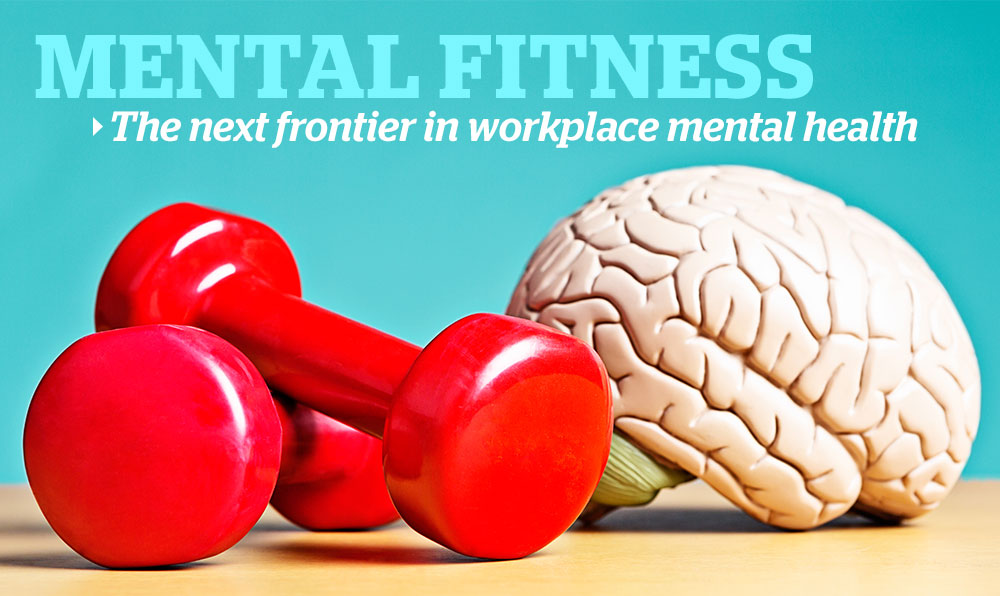

Features
Mental Health
Stress first aid: A core skill for protecting mental health
By Bill Howatt

We do not need to take a course or any kind of training to know when we are experiencing unwanted stress.
Eustress is good, positive stress that challenges and motivates us. The other type of stress is distress, which makes us feel overwhelmed and fearful. The challenge with stress is not the source; it’s how to deal with it.
Stress accumulates. Not knowing its cause and how to cope with stress are the biggest problems for many. When something triggers our fight or flight response, our mind and body move into survival mode, firing off increased cortisol and adrenaline levels to protect us. Chronic stress results in higher levels of cortisol that increase blood sugar levels and suppress the immune system, raising the risk of colds, contagious illness, cancer, food allergies, digestive problems, and weight gain.
This natural physiological response of fight or flight increases heart rate and blood pressure. Most bodily systems, including the immune system, digestive system, and brain, are impacted directly.
Research suggests that stress does not kill directly.
How much, how long, and how well one copes with stress can predict the degree of damage and risk of premature death. The damage can range from cardiovascular issues to unhealthy habits like overeating and drug and alcohol misuse.
Many are negatively impacted by distress because of ineffective coping skills. A person experiencing chronic stress lives in a constant state of emotional dysregulation that inhibits their ability to regulate their emotions within an acceptable range. They lose their composure and temper.
Three steps to a personalized stress first aid plan
1. Past experiences can negatively influence today’s emotional well-being. Your past learned experiences of parenting, trauma, schooling, and relationships, from the time you were a child, shape the story you run in your head about who you value, your capabilities, and your worth. How well or poorly you cope with stress is learned. Your ego is your protective system and does all it can to protect you, including acting out, hiding, ignoring, avoiding, and lying. If you often overreact to unwanted stress, going forward may begin with going backwards. When your ego perceives some part of you is at risk, such as the part that does not believe you are good enough, it will jump in to protect you, perhaps by triggering anger to push someone away. You do not need to fix the past. Understand how your past experiences and attachments activate your nervous system, shaping your thinking, feelings, and behaviours. From 30-plus years of counselling, I know how valuable spending energy and time to understand the past and move on from it can help you today.
2. Tame the midbrain first. When you experience a distress response, and your fight or flight system turns on, causing you to feel stress, you need to focus on your mid-brain to dampen your sympathetic nervous system. Find a quiet space, preferably in nature, walk, and do some deep breathing. You cannot talk to your mid-brain directly with words; however, you can influence it through deep breathing. Deep breathing that is slow and steady inhalation (e.g., breathing in three seconds through your nose) and exhalation (e.g., breathing out six seconds through your mouth) signals your parasympathetic nervous system to calm your body and turn off your sympathetic nervous system.
3. Train your brain. Your belief system will do what you tell it to do. Through repetition, you can convince yourself to believe something, provided it is realistic: “I can cope with XYZ and will be fine in time.” Regardless of the source, what you say to yourself over and over shapes your belief system. Once you get your nervous system calm, use the following three steps to train your brain to move where you want it to go (i.e., change I cannot to I can):
a. Clearly state what you want — You often know want you do not want in a stressful situation. Your brain needs to know what you want and why to move in the right direction. Take a moment and think rather than react. Space helps by taking a walk, watching a movie, sleeping on your concern, journaling, or chatting with an authentic connection about what you want. Become clear about what you want and why. Ensure you are being realistic and stating outcomes that are within your control. Write out what you want clearly in one sentence: “I want …because….”
b. Visualize what you want — See yourself getting what you want. What are you doing and feeling? Visualize the steps to get from where you are to where you want to be. It is normal to move past unpleasant emotions to get from point A to your desired outcome at point B, where you see yourself successful.
c. Anchor what you want — Once you are clear of what you want and why, it’s time to anchor your belief system to what it means to achieve this outcome (e.g., “I am confident, I am worthy, I am good enough”). Anchoring what you want to believe about yourself is a form of positive affirmation. With each life challenge, train your belief system so that your brain learns that you are capable and can cope. There will always be another stressful situation. Life can be exciting, but that doesn’t mean stress-free. You can train your brain that between every stressor and response is a choice of how you want to react and believe.
Dr. Bill Howatt is the Ottawa-based president of Howatt HR Consulting.
The Psychologically Safe Workplace Awards (PSWAs) are a national, evidence-based annual competition that measures the employee experience with respect to workplace mental health.
Print this page
